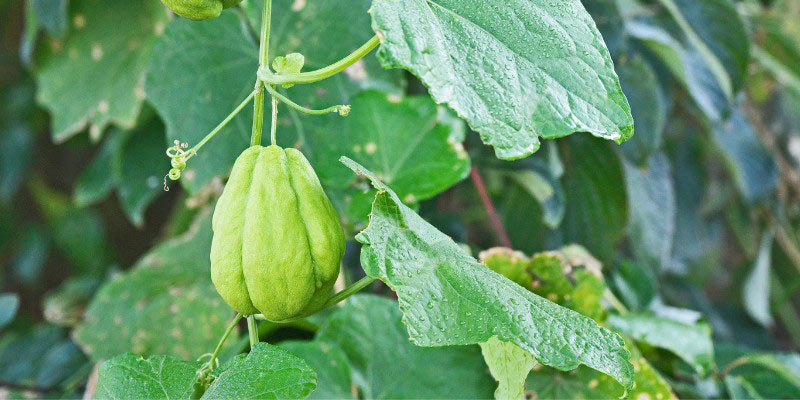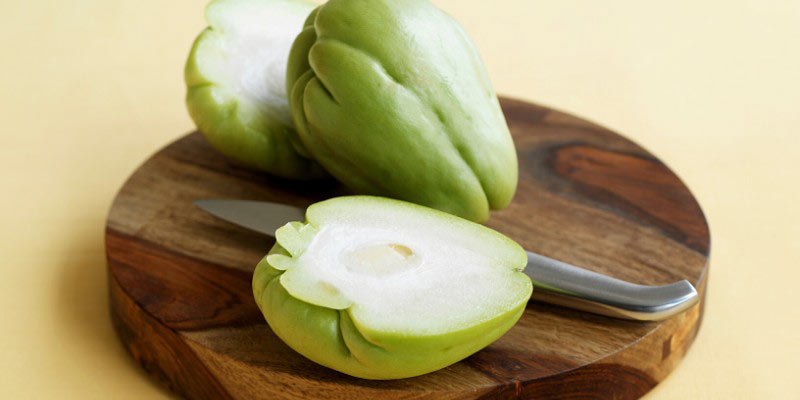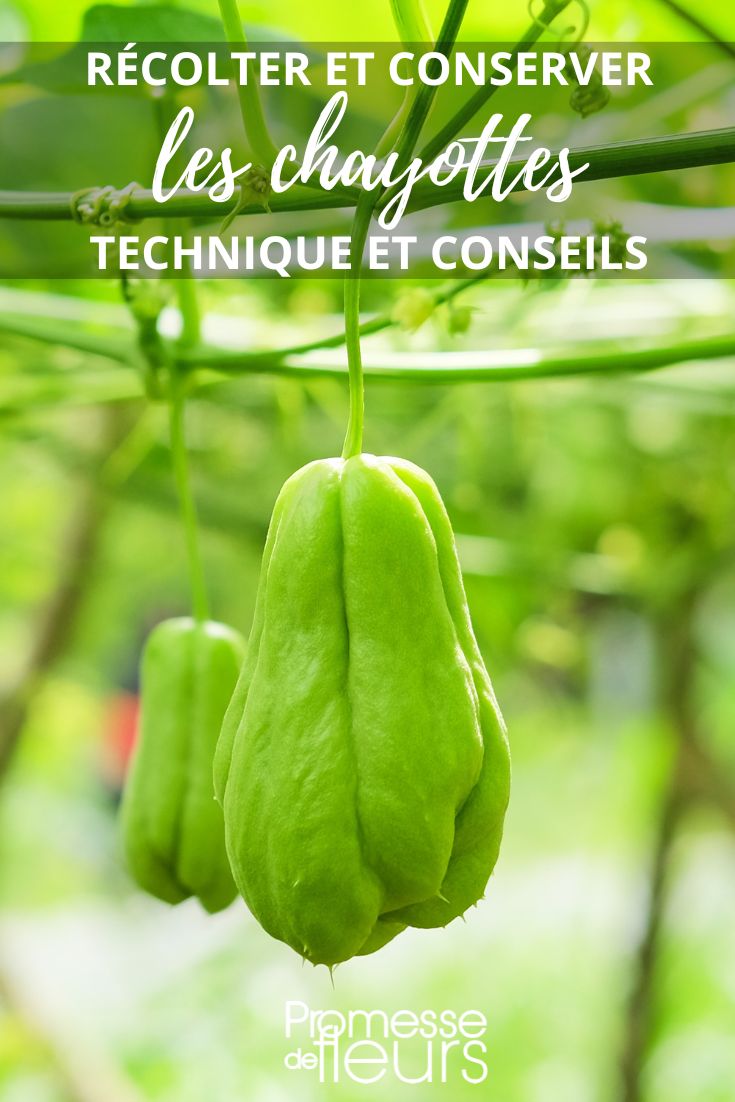Chayotte, also called christophine or chouchou, is an exotic vegetable-fruit grown mainly in tropical regions of South America and Africa. It is a pear-shaped fruit, pale green in colour, with a flavour reminiscent of courgette, and can be used in a wide variety of recipes. Chayotte deserves to be better known! In this tutorial we explain when to harvest chayottes, how to store them and how to cook them.
Chayotte: what is it?
Chayotte is a tuberous climbing plant native to Mexico. It belongs to the family Cucurbitaceae, like squashes. It grows quickly and produces tendrils that allow it to cling to a support, much like squashes. It can be grown in open ground or in a pot. It is nevertheless sensitive to cold and needs protecting in winter (hardy to -5 °C).
Chayotte produces pear-shaped fruits, pale green to yellow, with shiny, slightly bumpy skin. Flesh is pale green-white, firm and crunchy, with a flavour close to courgette and potato. They are rich in vitamins and minerals. Chayotte is mainly valued for its fruits, however all parts of the plant are edible: young shoots, leaves, fruits and tubercles.

When and how to harvest chayottes?
Harvesting chayottes takes place in early autumn, usually between September and November, before first frosts. Ideally harvest fruits when large and skin is thick enough to resist pressure from a nail, but just before fully ripe (they will keep more easily). You can then continue harvesting chayottes until first frosts. Chayotte plants are particularly generous, producing several dozen fruits.
How to store them?
After harvest, chayottes can be stored for several months in a cool, dark, ventilated place, spread out on a clean surface. Take care not to bruise them, otherwise they may rot. For long-term storage, you can also blanch chayottes and freeze them. It is also possible to preserve them in jars.

How to cook them?
Chayotte is very versatile in cooking and can be used in many recipes. It can be eaten raw, which is the best way to enjoy its nutritional qualities (rich in vitamin C, copper and magnesium). Grated or sliced into rounds or diced, it is perfect in salad. It can also be cooked, au gratin, mashed, pan-fried or steamed. It can be added to soups and stews. Its tender, slightly sweet flesh pairs well with various spices and herbs. Chayotte can also be enjoyed sweet, for cakes, compotes or jams.
It is also possible to eat young shoots, cooked like asparagus, tubercles prepared like chips, or leaves in a fricassee.

































Feedbacks